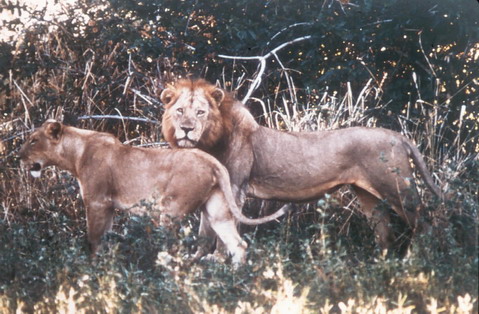Time to celebrate my contribution to science. The long-awaited work The Birds of Zambia is with us after all but 40 years in the making, and it is a triumph. What's more, I am part of it. You can find me in the acknowledgements: “Many friends and colleagues have added to knowledge ... too numerous to name all here.” That's me. Too numerous to name, but there.
Take page 382. The meat of this book is in 750 maps of Zambia, each one representing the distribution of a species of bird. The entry for cloud cisticola includes a map with a light sprinkling of small blue squares. Each blue square represents a place where the cloud cisticola has been recorded. One square is hundreds of miles from the rest. Rum, eh? The squares are 30 by 30 nautical miles. There are seven blue squares for cloud cisticola on the Angola border: the rogue square covers a tributary to the Zambezi much farther south. The text points this out and adds that the observation was made by Stjernstedt in 2003.
What it doesn't say is that I bought Stjernstedt's petrol, in circumstances it would be indiscreet to reveal. It doesn't say that I bought the J&B whisky; it doesn't say that I bought the Mosi (the local beer). It doesn't say that I was there, giving the aforementioned Stjernstedt the benefit of my knowledge, experience, culinary skills and beer.
This was a demented expedition in which we got triumphantly lost, survived my campfire cooking, drank the whisky in the clamminess of the night and still made the plane home. Baron Robert Stjernstedt, for it was he, is an old friend, a proper ornithologist and genius at song and call. He also runs a business called Birding With Bob.
Background
He picked out the amazingly unexpected call of the cloud cisticola, singing from a cloud just as it should, rather in the manner of a skylark. We recorded its voice and after some hours we got a clear view for a field description. We drove on, camped, sipped, having pushed back the frontiers of human knowledge by a full micron.
There are other birds in this book that I can boast about. Bob and I made another expedition, this time to North-Western Province. We made 39 new records on that trip, including the gorgeous Narina's trogon, named by the 18th-century naturalist François Le Vaillant for his lovely Khoi Khoi mistress.
I, and I alone, can claim our record for African broadbill. I heard its whirring wing-flicking noise when I was lying in a tent feeling like death; as expedition cook I had inhaled too much camping gas, largely because Bob had neglected to pack a shifting spanner. I recall the beauty of the rosy-breasted long-claw, the gorgeous song of Bocage's robin, the mundanity of tree pipit, the subtlety of Laura's warbler, for which Bob's lovely daughter is named.
I have made other atlas records with Bob in other places across Zambia, memorably at the time we drove up - just - the escarpment of the Luangwa Valley. We celebrated by drinking Mosi at a temperature at which it is perfectly acceptable to serve coffee.
This book contains years of work by great and dedicated observers, and it is a joy and privilege to be associated, even in so tiny a way, with so fine a venture. The glory of being too numerous to mention will be for ever mine: along with the memory of sodden singing, wringing wet forest mornings and fire-lit, whisky-lit forest evenings.
http://www.timesonline.co.uk/tol/comment/columnists/simon_barnes/article3463387.ece
